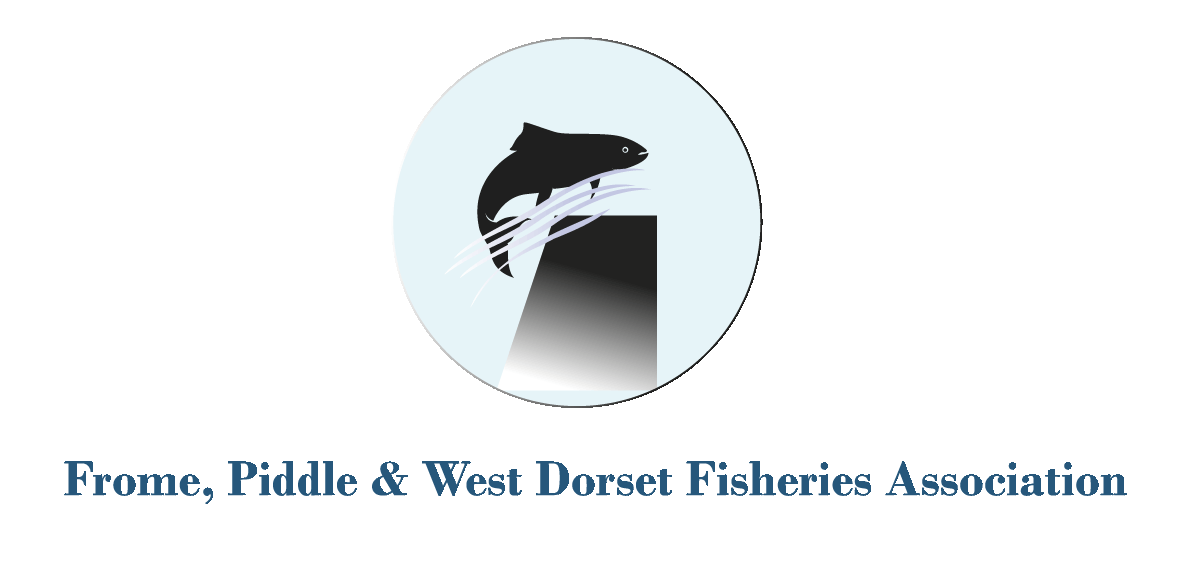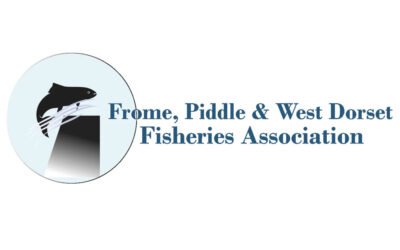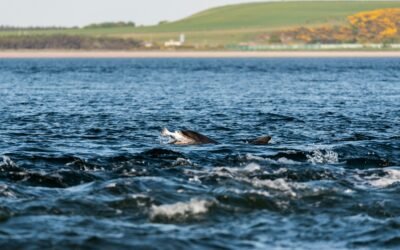
Beavers and Chalkstreams:
Some hard fact and no hysteria
News
Contact
Beavers and Chalkstreams:
Some hard fact and no hysteria
Beavers
Jeremy Legge looks at the prospects of beavers appearing on Hampshire’s chalkstreams
Beavers have been much in the news recently. They divide opinion, with ardent supporters at loggerheads with those who are deeply concerned about the damage they do. What are the facts? What are the arguments for and against beaver introductions? What are the prospects of them appearing on Hampshire’s chalk streams?
What are they?
Beavers are large, semi-aquatic rodents, weighing up to 30kg. The two main species, the Eurasian and North American, are roughly the same size, although the Eurasian beaver has a thinner skull and a longer tail. Their incisor teeth are about 25cm long.
They live in small family groups in the deep pools of rivers and lakes. If there is no deep water available, they will create it by building woody dams, typically on small rivers and streams less than 10 metres wide. They build a main dam where they also construct a ‘lodge’ in which to live and breed, and then further dams upstream to ensure that they have long lengths of continuous deep water to access the bank for feeding. Dams are created by cutting down trees, cutting branches and pulling them into the water and made watertight by puddling the upstream side with mud. Dams vary considerably in height from 10cm to over two metres and the resulting ponds and deep glides can cover large areas. The territory of a family group typically ranges across 2-4 km of a watercourse.
Their preferred diet is willow, but if it is unavailable, they will cut down and feed on the succulent small branches of most trees and shrubs. As they are rodents, their teeth continually grow, so they will also target the bark of very large hard wood trees such as oak and beech to gnaw. They are herbivores: they do not eat fish.
Beavers in the UK
Beavers became extinct in the UK in the 16th century, and almost extinct in the rest of Europe, mainly because of hunting for their fur, meat and ‘castoreum’, a secretion used in perfumes, food and medicine. Over the last 60 years they have been reintroduced into a number of European countries. They were reintroduced into Scotland as part of a trial at Knapdale in 2008, and granted legal protected status there in May 2019. In more recent years, beavers have been reintroduced into England under licence from Natural England, mostly in enclosed (fenced) environments. Several ‘wild’ populations have also been illegally introduced, including one on the River Otter in Devon, which was subsequently licensed as an unenclosed, five-year trial. There have been no prosecutions of those responsible for illegal introductions.
Eurasian beavers have been released into outdoor fenced enclosures at 25 sites in England since 2000. 17 of these releases were licensed; 8 were not. Beavers have escaped from about half of these sites, with escapees travelling up to 50km. Populations of wild-living and breeding beavers are now present in as many as six separate geographical locations in southern England, mainly in Devon and Cornwall, but also in West Sussex, Dorset, Kent and Surrey. There may also be additional, as yet unidentified, wild-living populations. The wild-living English beaver population is currently likely to exceed 60 territories and total as many as 400 individual beavers, according to Natural England. There are currently no known beaver populations in Hampshire.
Consultation on a national beaver management strategy
There is currently a moratorium on licensed beaver introductions whilst Natural England run a consultation on a national beaver management strategy. The consultation period ended in November 2021. The results should be announced early in 2022, when the moratorium will be reviewed. There is a presumption in the consultation document that there should be further reintroductions of Eurasian beavers in England. The claimed benefits are increased biodiversity, creation of wet woodlands and natural flood risk management through the attenuation of water flows. The identified risks include river bank and earthwork flood defence erosion and loss of agricultural land to flooding. For migratory fish species, the consultation document acknowledges potential negative impacts including the impassability of dams, loss of spawning habitats and increases in water temperatures.
The consultation document also acknowledges that managing beaver damage can be expensive: the Clinton Estate in Devon have submitted evidence to the consultation suggesting that dealing with the damage caused by the beavers introduced to the River Otter could cost them hundreds of thousands of pounds. It is admitted in the consultation document that those people (not further identified) benefiting from beaver activity may not be those who bear the cost, which “may result in conflict”.
The proposed approach would be to permit further wild reintroductions where there are clear benefits and where the risks of negative outcomes are avoided, mitigated for or managed. Those introducing beavers would have to demonstrate there is sufficient funding for the project for a 5–10-year period. Further introductions to fenced enclosures would also be licensed. Illegally introduced beaver populations would be allowed to remain. Beavers would become a protected species making it an offence to capture, kill, disturb or injure them, unless there is a clear need to limit the damage they are causing. The management hierarchy would encourage tolerance, but move through relocation to culling if no other options were available (on the River Tay in Scotland, over 200 beavers have been culled under licence in each of the last two years because of the extensive damage they have caused to riverbanks and agricultural land). Government policy is that it is the responsibility of landowners to cover the costs of managing the impacts of wild animals on their land. Natural England would not provide landowners with money for managing beaver damage.
Responses to the consultation have been along predictable lines. The Beaver Trust and the Wildlife Trusts are generally supportive of the proposed approach. Landowners and farmers are generally opposed. Fishery groups have generally tried to adopt a balanced approach. The Angling Trust, for example, have suggested that beavers might have a place in some locations, typically upland spate rivers where flash flooding is a problem, but more research is needed on their impact on migratory fish species. And it should be the responsibility of those introducing beavers to pay for their management, not fisheries and landowners who don’t want them in the first place.
What next?
The result of the consultation is not a foregone conclusion, but with Natural England having made their position clear and knowing that they have high-level political support, I wouldn’t bet against most of the proposed approach being adopted. Then what? There are no current plans to introduce beavers to Hampshire chalkstreams, but the Hampshire and Isle of Wight Wildlife Trust have appointed a beaver project officer, are consulting on plans to introduce beavers on the Isle of Wight and are planning habitat assessments in Hampshire. The National Trust, riparian owners on the Test and Itchen, are promoting a project to introduce beavers on some of their land in Dorset.
Beavers on chalk streams?
Would beavers have a positive or negative impact on Hampshire chalkstreams? I have not found anybody who thinks beaver introductions here would be a good idea. Perhaps I am keeping the wrong company. But I am confident that the overwhelming majority of Test and Itchen riparian owners would be strongly opposed. Why? Other than the damage they cause and the cost of managing it, the “river engineering” undertaken by beavers has a diametrically opposite effect to what fishery owners (and the Environment Agency through their award-winning Test and Itchen Restoration Strategy) have been trying to achieve for the past 20 years and more. Chalkstream restoration projects have removed impoundments to river flow and fish migration. Beavers construct them. Restoration projects aim to increase the energy of river flows by narrowing and reducing the depth of river channels. Beaver dams decrease the energy in rivers, broadening and deepening river channels. Restoration projects aim to create gravel spawning habitats by preventing the accumulation of silt. Beaver dams trap silt in the river. And so on. And so on. One would like to think that introducing beavers to chalk streams is so obviously counter-productive that nobody would be daft enough to suggest it. But I wouldn’t put it past those who have little idea how chalk streams are managed and have no interest in promoting them as fisheries. It will be up to those who understand best and care most for Hampshire’s chalk streams to campaign hard against any proposals that might emerge.
More information, to help you make your own mind up, can be found in the following documents, which are available on the internet. You can also find copies in the Members’ Area of the Association’s website:
Approach to beaver reintroduction and management in England. DEFRA Consultation document. August 2021.
Beaver introductions in England 2000-2021. Natural England publication. August 2021.
Angling Trust response to DEFRA beaver consultation. November 2021.
Review of evidence of interactions between beavers and fish and fisheries in England and Wales. Professor Ian Cowx. December 2020.
All Current Campaigns
Join Us
Our Newsletters
AGM
, Annual General Meeting Friday 27rd September 6.30pm Winfrith Newburgh Village Hall Water Lane, Winfrith Newburgh DT2 8LR The guest speakers will be Professor Ken Whelan – a fisheries scientist with extensive international experience. Bill Beaumont - SAMARCH...
Catch up from the Committee
Dear Members and Friends It has been a while since we last met up and much has happened and changed. As many of you will know, we have lost our dear friend Richard Slocock; who was our Chairman for so many years and I am sure he had chalk stream water in...
Now we know what is happening to our Salmon and Seatrout Smolts when they leave the Frome & Piddle
NewsContactTopics to cover in this newsletter. a Multi National research paper with Prof Ken Whelen (who was our AGM guest speaker a few years ago), looking into where tagged salmon smolts go to feed at sea. A recent presentation by Simon Toms (joint head of EA Salmon...



